Global Equality Art Collection at Väre
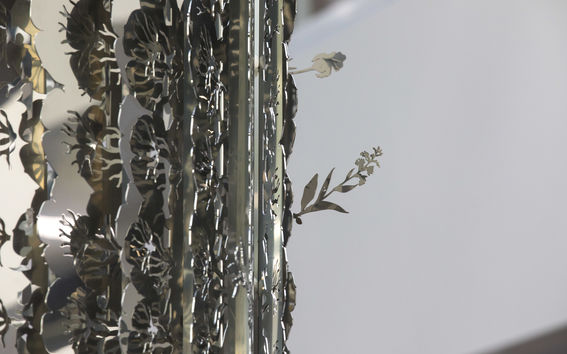
Art in Väre by Vice President Anna Valtonen
Art gives us an opportunity to rethink all forms of knowing and doing. To be able to experience great art in our premises – to have this opportunity to rethink on a daily basis – is a privilege.
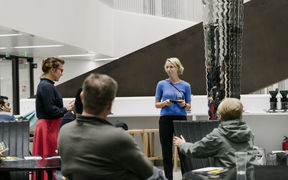
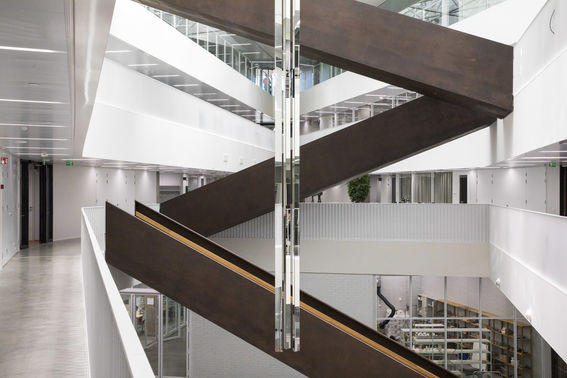
Tommi Grönlund and Petteri Nisunen: Insight (2018)
Winner of the invited art competition.
Insight offers the viewers constantly altering viewpoints, underlining how our common environment is seen in various ways, none of which is as such better than the other. The work moves the attention away from itself and reflects all activities and people around it instead.
Students and members of staff, despite of their professional status, nationality, race or gender are seen in an equal way as an integral part of the whole. Occasionally this communal aspect of the work is intensified, as the viewer catches a glimpse of oneself among others.
The visually light and constantly altering artwork is in continuous dialogue with the surrounding architecture and offers a delicate contrast to the sculptural and monolithic staircase dominating the space. The vertical mirrors rotate slowly, and the moving reflections of the surrounding space create a surreal linear phenomenon in the void of the cluster space. On sunny days, the work casts slowly moving linear reflections to open corridors surrounding it.
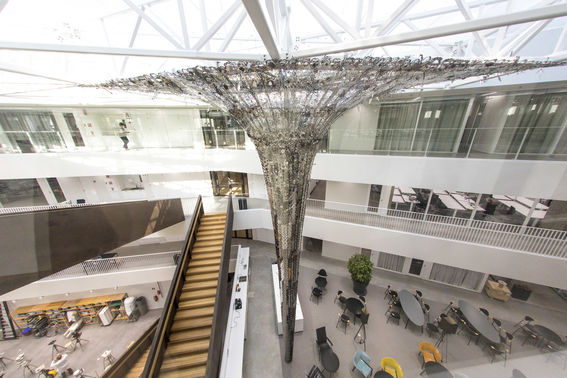
Kirsi Kaulanen: Lumen (2018)
Winner of the invited art competition.
Lumen connects hard technology with nature and femininity. The site-specific artwork interplays with the architectural space by stretching from floor to ceiling and adding ornamentation to the straight lines of the space. The piece refers to an old Finnish work of mythology, ‘Sammas’, a world pillar which connects the earth and the sky.
A lumen is also a unit of light, and in Väre Lumen reflects its surroundings. The artwork also addresses the relationship between humans and nature. There are about 150 different lasercut steel flowers of endangered plants from around the world. The plants form paths in the surface of the sculpture. The sand couch grass plant was the inspiration for the root patterns in the artwork, serving as a reminder of the unity of each moment. According to biologists, the roots of trees connect with each other.
Production team: Laserle Oy, Timo Luukkonen Tmi, Pentti Nyholm
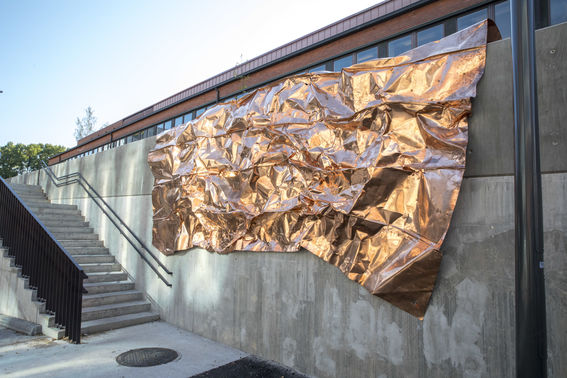
Gloria Lauterbach: Kreutzstrasse (2018)
Winner of the Wall-art student art competition
Kreutzstrasse is a replica of a copper roof element torn off by a heavy storm from a church in Zurich, Switzerland in 2015. For the new Väre building, the roof remains have been re-created including the entangled birch tree. The roof has been made using traditional roof-making techniques taught to the artist by her grandfather.
The artwork wishes to raise questions on the possibility of transferring forces and events, extracting them from their original context to make them globally experienceable, underlining our existence as entangled beings, living as meshworks. It is planned for the artwork to be at the site for five to seven years, and it will part of Lauterbachs doctoral dissertation work. As such, it will also become a public laboratory.
- Published:
- Updated: